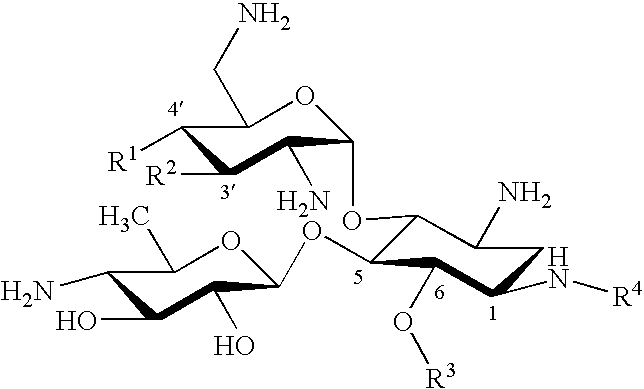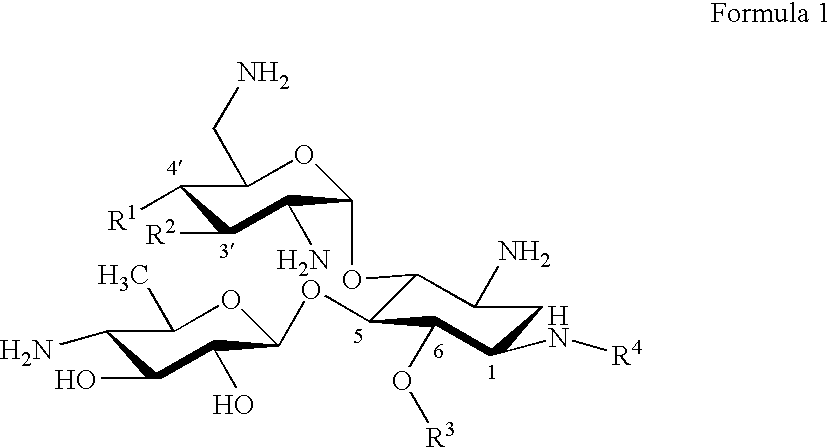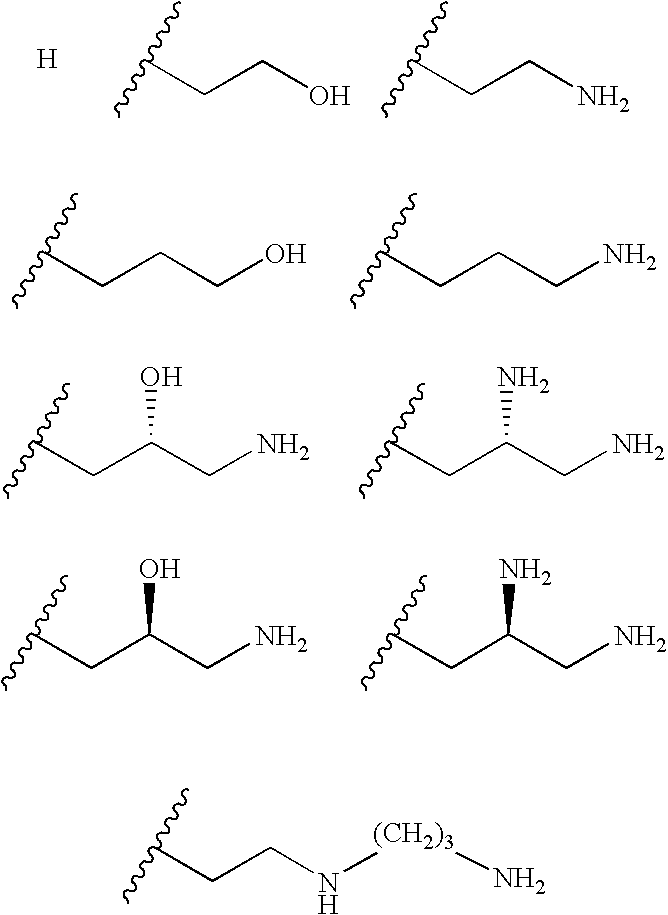Novel anti bacterial compounds
a technology of antibacterial compounds and compounds, applied in the field of new antibacterial compounds, can solve the problems of low solubility of polycarbamate compounds in organic media, difficult purification and characterization, and limit the possibility of novel structural motifs at other desirable places of aminoglycosides
- Summary
- Abstract
- Description
- Claims
- Application Information
AI Technical Summary
Problems solved by technology
Method used
Image
Examples
example 1
Synthesis of 3′,4′-Dideoxy Pyranmycin (RR501)
[0037] To avoid the solubility problem, we used azido groups as the surrogate for amino groups. The synthesis of a key intermediate, 3′,4′-dideoxyneamine, began from neamine. Neamine was obtained from acid-hydrolysis of neomycin (purchased from Research Organics Inc.), then converted to tetraazidoneamine, 2, using TfN3 and CuSO4 (Scheme 1).5 The selective protection of the diol was achieved using cyclohexanone dimethylketal. The key transformation is the elimination of diol to alkene. To our surprise, we were unable to locate didexoygenation methods that are compatible with the presence of azido group and the acid-labile glycoside bond despite numerous documentations. In general, the reported methods for dideoxygenation often require reductive or harsh conditions, for example, the presence of Zn, NaI, and heating from dimesylated compound (Tipson-Cohen method),10 acid-catalyzed elimination from a diol using ethyl orthoformate (Crank-East...
example 2
Synthesis of Pyranmycin Compounds (with 3′,4′ hydroxyl) and
[0040] Compounds of Example 1 with hydroxyl substitutions at both the R1 and R2 positions are made as described in Reference 4.
example 3
Synthesis of Pyranmycin, 3′,4′-Dideoxy Pyranmycin Compounds with (S)-4-amino-2-hydroxybutyryl in the R4 Position
[0041] Compounds of Examples 1 and 2 with (S)-4-amino-2-hydroxybutyryl in the R4 position are made as follows (Scheme 3). Compound 10 was obtained from 3 (see Scheme 1) via acetylation of the O-3′ and O-4′ diols, followed by deprotection of the cyclohexylidene group. Diacylation of O-5 and O-6 diols afforded 11.
A one-pot azido reduction / amine protection was employed to selectively modify the N-1 azido group of 11 (Scheme 4). After hydrolysis of the acyl groups, the desired 1-N-tBoc protected neamine, 15, was synthesized in an overall of 33% along with 3-N-tBoc protected neamine (5%) and 1,3-N-di-tBoc protected neamine (22%) as the minor products. Selective benzoylation of O-6 of 15 yielded 17.
Glycosylation of 17 using 7 as the glycosyl donor followed by NaOMe-mediated hydrolysis afforded 18 (Scheme 5). Deprotection of the tBoc exposed the N-1 amino group, which was ...
PUM
| Property | Measurement | Unit |
|---|---|---|
| resistance | aaaaa | aaaaa |
| solubility | aaaaa | aaaaa |
| width | aaaaa | aaaaa |
Abstract
Description
Claims
Application Information
 Login to View More
Login to View More - R&D
- Intellectual Property
- Life Sciences
- Materials
- Tech Scout
- Unparalleled Data Quality
- Higher Quality Content
- 60% Fewer Hallucinations
Browse by: Latest US Patents, China's latest patents, Technical Efficacy Thesaurus, Application Domain, Technology Topic, Popular Technical Reports.
© 2025 PatSnap. All rights reserved.Legal|Privacy policy|Modern Slavery Act Transparency Statement|Sitemap|About US| Contact US: help@patsnap.com



